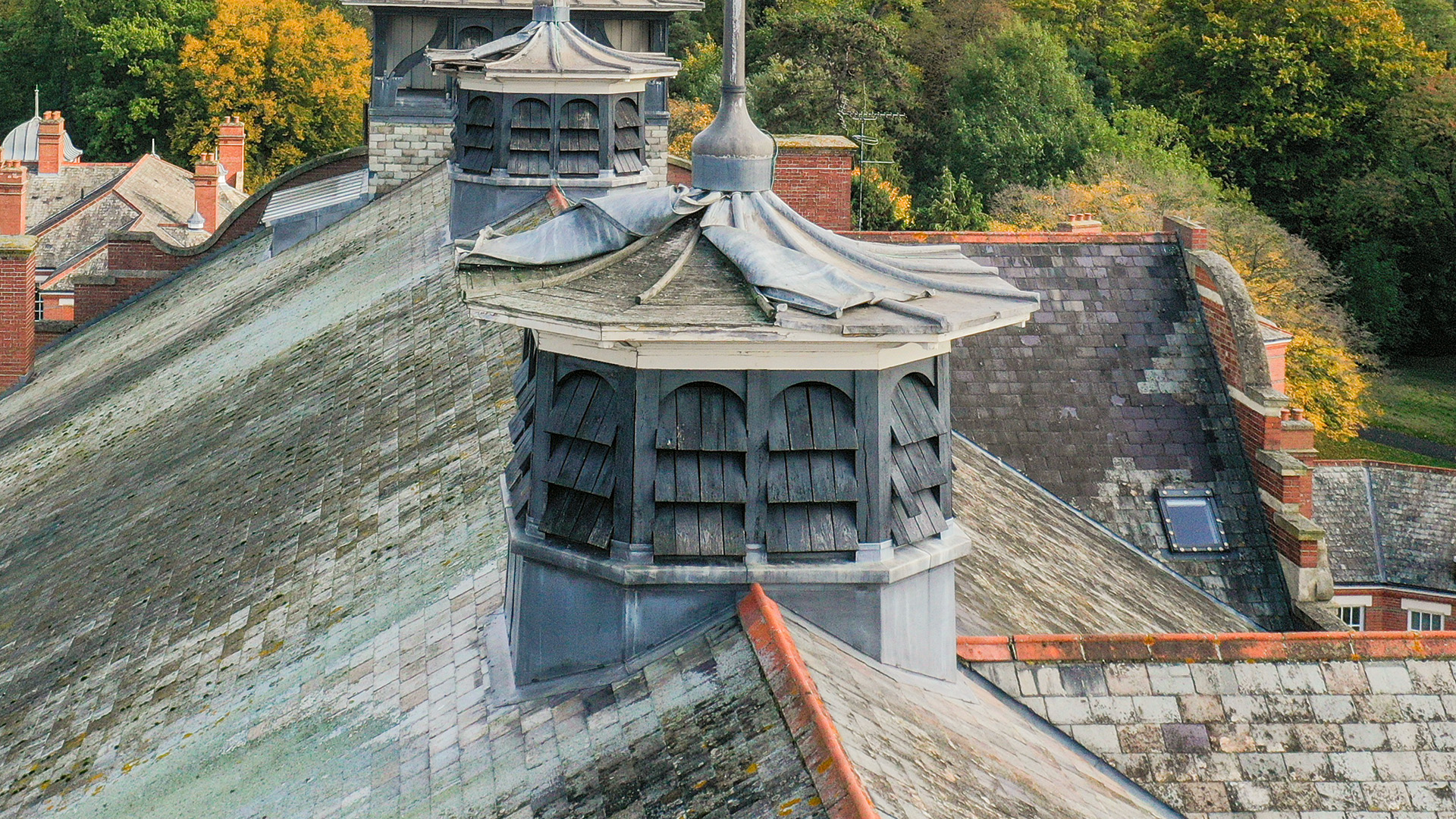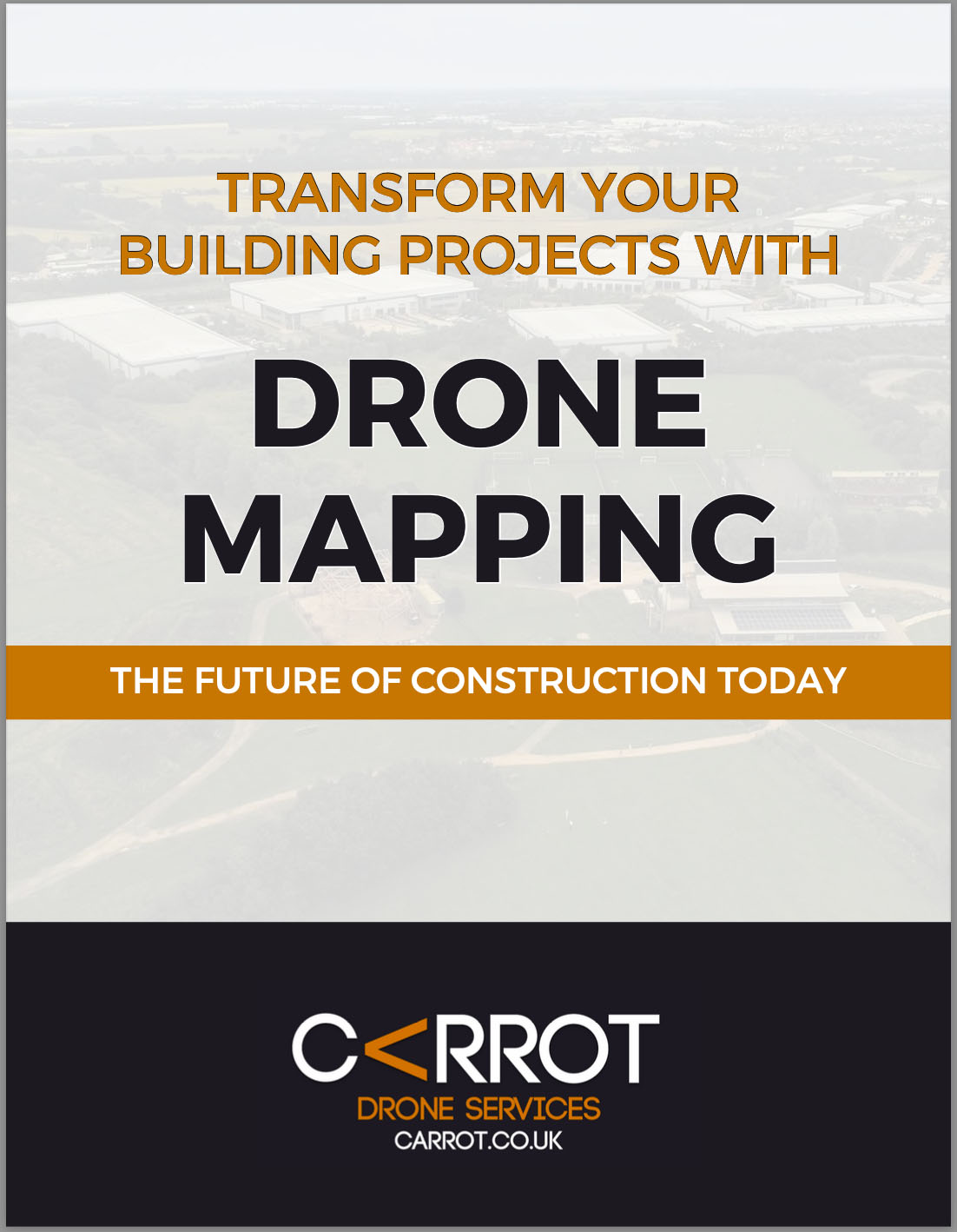Read Time 5 mins
18/01/2024

Introduction
Building inspections have long been a critical aspect of the construction and maintenance industry. Traditionally, these inspections involve manual methods that rely heavily on physical access to various parts of a structure. Scaffolding, ladders, and cranes are commonly used to enable inspectors to reach high or otherwise inaccessible areas. This process can be time-consuming, costly, and not without risk. Inspectors often face hazards such as falls, bad weather, and structural instabilities. Moreover, the setting up and dismantling of scaffolding can add significant time and expense to a project, not to mention the potential for obstructing daily operations, especially in urban environments.
In recent years, drone technology has emerged as a game-changer in the field of building inspections. Drones, or unmanned aerial vehicles (UAVs), equipped with high-resolution cameras and other sensors, can easily access hard-to-reach areas without the need for scaffolding or other cumbersome equipment. They offer a safer, faster, and more cost-effective method for conducting thorough inspections. From capturing detailed images of a building's exterior to identifying maintenance issues that are not visible from the ground, drones are revolutionising the way building inspections are conducted. This innovative approach not only enhances safety but also significantly reduces the time and labor costs associated with traditional inspection methods.
Benefits of Drone Inspections
The advent of drone technology in building inspections brings numerous advantages over traditional methods. One of the most significant benefits is cost-effectiveness. By utilising drones, the need for extensive scaffolding, lifts, and other expensive equipment is greatly reduced. This results in a noticeable decrease in the overall cost of the inspection process. Drones can cover large areas in a fraction of the time it would take using traditional methods, leading to further cost savings in terms of labor and time.
Another crucial advantage is safety enhancements. Building inspections, particularly at height, carry inherent risks. Drones eliminate the need for inspectors to physically access dangerous or hard-to-reach areas, thereby significantly reducing the risk of accidents and injuries. This remote inspection capability ensures a safer working environment for inspectors and site personnel.
In terms of time efficiency, drones are unparalleled. They can quickly and easily access any part of a building, eliminating the time-consuming process of erecting and dismantling scaffolding. Drones can complete comprehensive inspections in a fraction of the time, minimising disruption to building operations and reducing the inspection timeline.
Lastly, drones contribute to better data quality. Equipped with high-resolution cameras and advanced sensors, drones can capture detailed images and videos, providing inspectors with a clearer and more comprehensive view of a building's condition. This improved data quality aids in more accurate assessments, better-informed decisions, and more efficient maintenance planning. With the ability to capture different types of data, such as thermal imaging, drones offer a more holistic view of a building's health.
Drones vs. Scaffolding: A Comparative Analysis
When considering building inspections, the choice between drones and traditional scaffolding hinges on several factors. A cost comparison reveals that drones are generally more cost-effective. While the initial investment in a drone may be significant, the overall cost savings become apparent in the long run. Scaffolding, on the other hand, involves recurring costs such as rental, labor for assembly and disassembly, and potential delays in project timelines, all of which can add up considerably.
The time needed for setup and completion of inspections is another critical factor. Setting up scaffolding is a time-intensive process that can take days, depending on the size and complexity of the building. In contrast, drone setup is minimal, and inspections can often be completed in a matter of hours. This efficiency not only saves time but also reduces the downtime for buildings undergoing inspections.
When it comes to safety aspects, drones offer a clear advantage. Scaffolding poses risks of falls and injuries, both to the workers setting it up and those using it. Drones eliminate the need for physical climbing, significantly reducing the risk of workplace accidents. This aspect is particularly beneficial in inspections of tall or structurally compromised buildings.
Lastly, the environmental impact of the two methods is worth considering. Drones, being compact and electrically powered, have a relatively low environmental footprint. Scaffolding, in contrast, requires transportation of heavy materials to and from the site and can cause disruption to the surrounding area during setup and removal. The use of drones, therefore, aligns better with sustainable and environmentally friendly practices.
Applications in Building Inspections
Drones are increasingly becoming an indispensable tool in various aspects of building inspections. One key application is in structural assessments. Drones provide a unique vantage point to view and assess the structural integrity of buildings. They can easily reach areas that are otherwise difficult and risky to access, such as high-rise exteriors, enabling inspectors to identify potential structural issues like cracks, damages, or wear and tear without the need for physical scaffolding.
Another significant application is roof inspections. Traditionally, inspecting a roof, especially on tall buildings, is a challenging and risky task. Drones simplify this process by capturing high-resolution images and videos of the roof, allowing inspectors to conduct detailed inspections safely from the ground. This approach is not only safer but also quicker and less intrusive.
Drones also play a vital role in historical building surveys. Preserving the integrity of historical structures while conducting inspections can be challenging. Drones offer a non-invasive method to inspect and document the condition of historical buildings. They can capture detailed imagery without touching or putting any physical stress on these often delicate structures.
Lastly, drones equipped with thermal imaging cameras are used for thermal imaging inspections. This technology allows for the detection of heat loss areas, water leaks, and other issues related to insulation and moisture. Such inspections are crucial in energy conservation efforts and in identifying hidden problems that are not visible to the naked eye.
Carrot Drone Services: Your Partner in Efficient Building Inspections
Carrot Drone Services stands at the forefront of integrating drone technology into building inspections. Our array of services encompasses everything from detailed structural assessments to comprehensive roof inspections, historical building surveys, and advanced thermal imaging. We harness the power of the latest drone technology to deliver unparalleled inspection services.
Our unique selling points lie in our commitment to safety, efficiency, and accuracy. We utilise drones equipped with state-of-the-art cameras and sensors, ensuring high-resolution imagery and precise data collection. This technology, combined with our team's expertise in piloting and data analysis, allows us to provide detailed and accurate inspection reports. Our approach significantly reduces the risks associated with traditional inspection methods, making it a safer alternative for both our clients and our team.
At Carrot Drone Services, we pride ourselves on our expertise in the field. Our team is composed of skilled professionals with extensive experience in both drone technology and building inspections. We stay abreast of the latest advancements in drone technology to ensure that our services are always at the cutting edge. Our commitment to continuous learning and improvement means that we can offer the most efficient and effective inspection solutions available.
We understand the diverse needs of our clients and offer tailored solutions to suit different types of buildings and inspection requirements. Whether it’s a modern high-rise, a sprawling industrial complex, or a treasured historical building, Carrot Drone Services has the expertise and technology to provide comprehensive inspection services that meet and exceed your expectations.
Conclusion
In summary, drone inspections represent a significant advancement in the building inspection industry. They offer numerous advantages, including cost-effectiveness, enhanced safety, time efficiency, and superior data quality. These benefits make drones an invaluable tool for a wide range of inspection needs, from routine structural assessments to specialised historical building surveys and thermal imaging. As the industry continues to evolve, the role of drone technology is set to expand further, promising even greater efficiencies and innovations in the field.
Looking to the future, we can expect drone technology to become even more integral to building inspections. Advancements in drone capabilities, such as improved battery life, enhanced sensor technology, and sophisticated data analysis software, will continue to push the boundaries of what is possible. The integration of artificial intelligence and machine learning could automate aspects of the inspection process, making it even more efficient and accurate. As these technologies develop, Carrot Drone Services remains committed to staying at the cutting edge, offering our clients the best in drone inspection services.
Contact Us
For more information about our services or to discuss how we can assist with your building inspection needs, please reach out to us. C all us directly at +44 3333 034874. We’re here to provide you with expert drone inspection services tailored to your specific requirements. Let Carrot Drone Services be your partner in efficient and innovative building inspections.
Interested in learning more or ready to schedule an inspection? Don't hesitate to get in touch. We’re eager to show you the difference that drone technology can make in your next building inspection project.
